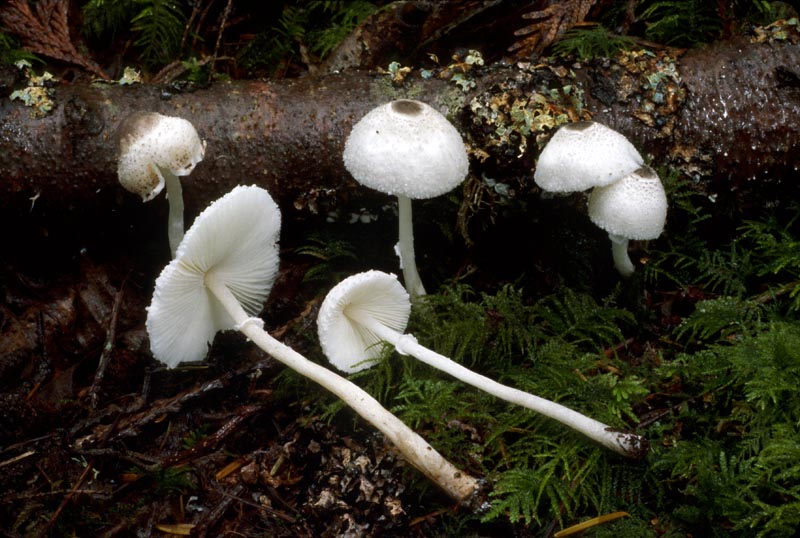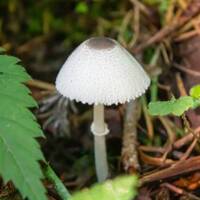Distribution: Common
Habitat: woodland
Spores: Most abundant in summer
Conservation Status: Not of concern
Leucocoprinuses typically are thin-fleshed with a radially pleated cap and tendency to look collapsed with age, as if partially deliquescent. The center of its cap is very dark gray brown to almost black and the margin is white but decorated with small gray-brown to blackish scales. The gills are crowded and white and the stipe is slender and clavate, white with pinkish brown in the lower part, and bearing a white somewhat fragile ring that often is lost with age. The spores are thick-walled with a distinct germ pore. L. brebissonii often appears in late spring, but is most abundant in summer, often occurring in large groups on forest litter. It presents something of an enigma because of its seemingly overnight appearance in recent years, especially in second-growth forests in the Puget Sound lowlands. It has been very common recently, and it is hard to understand how such an abundant species could have been overlooked in the past. Perhaps its summer occurrence has caused it to go unnoticed. Another possibility is that it has been mis-identified as the somewhat similar Lepiota atrodisca Zeller, a species described from Oregon and also reported from California. Clearly more work is needed to solve this puzzle.
PNW Herbaria: Specimen records of Leucocoprinus brebissonii in the Consortium of Pacific Northwest Herbaria database
CalPhotos: Leucocoprinus brebissonii photos




